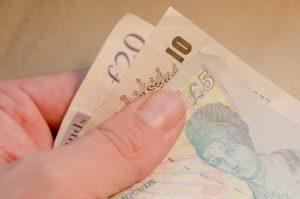Cycling In Snow And Ice

Cycling in snow or ice can be a red flag to many cyclists. When it gets very cold outside, the roads are more hazardous than normal. Many riders choose not to ride outside during such weather. However, with the right preparation and some forethought, it’s quite feasible to ride throughout even the most treacherous conditions.
We will separate our advice into three different areas: bike preparation, riding style, and the right clothing. This article concentrates on the first two, as we have covered keeping yourself warm here
Bike Preparation
Disc brakes – if you don’t have a winter bike but are looking to get one then seriously consider one with disc brakes. The value of extra stopping power and control, especially in the wet or ice can’t be overestimated.
wet or ice can’t be overestimated.
More rubber on the road – the bigger the contact patch that your tyre puts down on the road the more chance you will have of finding grip. The easiest two ways to do this is to run your bike with the fattest tyres you can. Then, once they are on, lower their pressure as much as you can. If you have access to a tyre with knobbles or a tread pattern then that will help as well.
Studded tyres – a bit specialist this one, but if you know that you are going to be riding on icy / snowy conditions for more than the odd day or two, then consider getting some studded tyres to help you cut through the slippery stuff and provide grip. The choice of studded tyres (in the UK at least) is much less than for standard tyres. However, there are still a few choices for different wheel diameter and width combinations.
Try tubeless – if you have tubeless-compatible rims and tyres, then this may also be another way to get more rubber on the road. An advantage of tubeless is the ability to run tyres at lower pressures without the risk of pinch punctures. Also, as tubeless tyres self-seal you won’t be fixing puntures in the cold and wet
Flat pedals – if you’re a clipless pedal rider then consider swapping your pedals for flats in slippery conditions. You’ll lose a little bit of pedalling efficiency. However, it’s probably a small price to pay to get your feet on the ground quickly in an emergency. If you don’t want to fit flats then adjust the tension on your pedals so you can get your feet out quickly.
Riding style
Keep away from the kerb – this is good advice at any time of the year but even more so when it’s icy. The gutter will accumulate all sorts of rubbish, slush and frozen pooled water. If possible try to ride in the part of the road where car tyres are running. This will generally be cleaner and less likely to be frozen.
Increase braking distance – it still needs to be said, even if it sounds obvious. Cycling in snow will increase the amount of time it takes to come to a stop. Give yourself plenty of leeway, and try to look ahead and anticipate potential problems.
Keep away from front brake – under normal circumstances careful use of the front brake can be useful to help you slow, but on the ice it’s not a good idea. Any loss of control or traction is likely to lead to an unrecoverable situation which could end badly.
Choose your road carefully – if your normal roads are nice quiet country lanes then you may need to re-think your route. Try to use roads that are a little busier and may have been gritted. Also if the worst does occur and you have a mishap then you’ll find assistance etc on a busier road.
Choose your line carefully – just as important as choosing the right road is choosing the right line on the road, especially if it’s a bit twisty or has sharp turns. Taking a wider line than you normally would to flatten out tighter turns. This means less turning of the front wheel and less opportunity to lose control.
Keep it smooth – when cycling in snow, try to keep your pedalling style and speed smooth. Constantly accelerating and braking will give your more opportunities to lose control. Maintaining a more consistent speed will allow you to coast to stop where possible. This will reduce the possibility of locking the brakes up and skidding or sliding out of control.
If you found this advice helpful please consider supporting us by buying a tea at www.buymeacoffee.com/cyclinglabs








